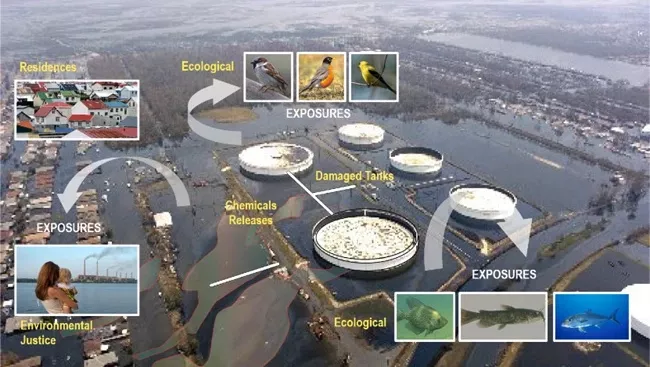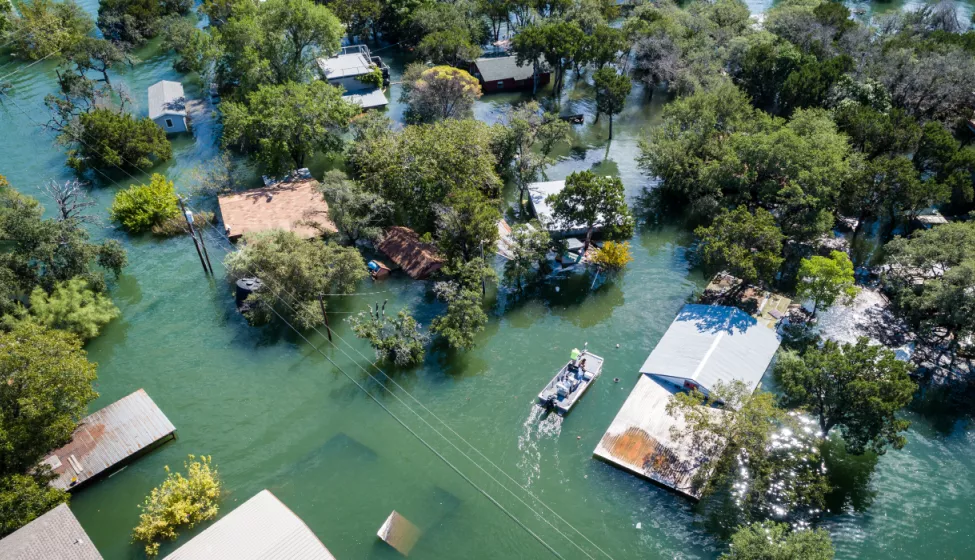December 16, 2021
Headlines related to climate change, extreme weather events, and their consequences have become a near daily occurrence. 2021 saw ice storms in Texas, water scarcity in the west, numerous wildfires that started earlier and were more severe than in previous years, and so much hurricane activity that forecasters ran out of storm names a month before the end of the season. Available data show that this is not just anecdotal: the frequency of billion-dollar storms and weather-related events continues to increase, hitting an all-time high in 2020.
Extreme weather events impact business operations, infrastructure, and supply chains and expose companies to potential liability and stakeholder demands for action. Many of these risks were previously thought of as low-probability, high-consequence type events, but their likelihood has changed drastically, and risk calculus must take current and future realities into account on a granular scale.
Public and private sector organizations can no longer afford to postpone formal liability risk assessments as part of their overall climate and extreme weather risk analyses and management. Being proactive now can reduce future liability risks and consequences.
The Right Questions
Though much attention has been paid to infrastructure and facility risks, the collateral environmental and health liability risks and consequences of infrastructure failures have received much less attention in climate change risk discussion, despite being intertwined (Figure 1). September's Hurricane Ida resulted in more than two thousand reports of water pollution under investigation by the U.S. Coast Guard, including more than 50 oil slicks detected by satellites in the Gulf of Mexico.

Figure 1. Infrastructure and facility risks are intimately intertwined with environmental and health liability risks as a consequence of climate change and extreme weather-induced infrastructure failures.
Urgent action is needed and can no longer be postponed. As businesses grapple with understanding their risks related to extreme weather and climate change, it is important to consider the technical details and understand risk on a much smaller scale (both in time and space — individual events at individual facilities).
Companies face many challenges across a large area, but the first set of steps is to understand the risks and specific vulnerabilities and then prioritize actions. Technical rigor is no longer optional; it is fundamental. While initial climate-risk assessments conducted over the past decade focused on whether an entity would be affected by changing climates, it is increasingly clear that nearly everything is at risk — the questions are now how, when, and what are the consequences?
The Right Tools
Liability assessments must be multifaceted, location and facility-specific, and technically rigorous. There are publicly available, rigorous tools (assessment methods, models, etc.) for understanding climate-related risk at a national or regional level that can be applied to specific sites. Available tools include downscale, regional, or site-specific probability models identifying most vulnerable facilities, sites, and assets along with environmental and ecological risk models.
The choice of analysis tool or tools should be specific to 1) the facility being examined and 2) the questions being asked. In many, if not most, cases, a combination of multiple models or tools may be needed to appropriately assess facility or site risk and identify appropriate mitigation measures.
Climate-related liability risk assessments will be the basis for strategic decisions, actions, and investment. Perfunctory assessments are easy to do but less than actionable. High-quality outcomes depend on high-quality assessments. This requires a highly technical, focused liability risk-assessment approach tailored to an individual entity. At this time, the riskiest corporate behavior is to delay these assessments.
How Exponent Can Help
Exponent offers strategic, multidisciplinary climate consulting to public and private sector stakeholders seeking to both understand and mitigate the physical and liability risks of climate factors, reduce GHG emissions, and understand risks to supply chains including water. Additionally, we assess and advise on the environmental and ecological risks and consequences of climate-related failures and incidents.
Our broad expertise across numerous engineering disciplines, public health, ecological and environmental sciences, hydrology, natural resource damage assessment, and restoration and mitigation analysis gives our clients access to an unparalleled wealth of skills and resources that can help build unique solutions to unprecedented challenges.

